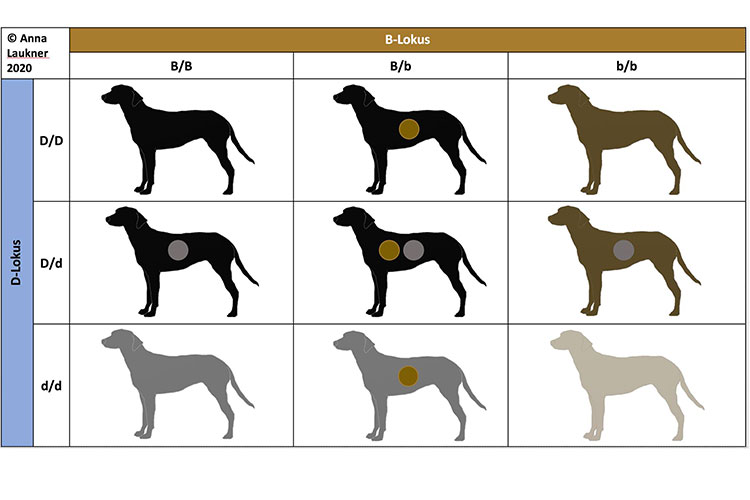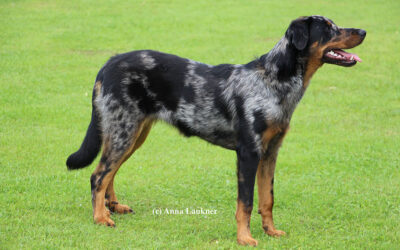I am asked frequently how brown and blue are inherited.
This is an explanation of the inheritance of dilution and the brown factor and their interaction.
The Diluton is located on the locus D (there are three different alleles testable at present (d1, d2 and d3), which I sum up as “d” to simplify matters). The allele d for dilution is recessive to D (no dilution).
The variant for brown (chocolate, liver, red (in Aussies and Doberman Pinschers)) is located on the Locus B. There are at least five different variants (bc, bd, bs, b4 and be, summed up to b in this example), all of them are recessive to B (no brown).
In the chart, the color of the dog represents the phenotype (the appearance of the dog), the circles inside the dog represent carried alleles (a blue circle means dilute carrier, a brown circle means brown carrier). A dog homozygeous for dilution and homozygeous for brown at the same time (genotype b/b d/d) is lilac.
Important note: Both factors affect eumelanin (primarily black pigment). To be black, blue, brown or lilac, a dog must have a black base color (either dominant or recessive black).
Another important note: Dilution can be associated with the skin disorder CDA (color dilution alopecia). According to the breed, the risk for CDA in dilute dogs might be more or less distinct. There is no genetic test for CDA, the disorder can be diagnosed via skin biopsy so far (current state: Dec 2020).





Recent Comments